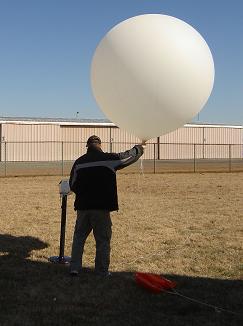Image: National Weather Service
Blog Editor’s Note: Interesting article below by Tony Murfin in “GPS World” last week. We had no idea in this era of satellites and instrumentation there were so many balloons being launched.
The National Weather Service site says they launch from 92 sites in the US each day.
We wonder why Tony didn’t go the extra step and speculate about possible implications for GPS/GNSS services and users.
Big weather balloons can be had for less than $1,000 and carry 6.6 lbs of gear. GPS jammers can be purchased off the internet for less than $200. Timers, power packs, etc. are inexpensive and easily available. – Amazing what you can find on the internet.
Balloons have been used for terror attacks on the USA before. In WWII program called Fu-Go, Japan sent balloons toward the US with incendiary devices. The intent was to start forest fires in the Pacific Northwest.
US attempts to intercept the Fu-Go balloons seem to have been mostly ineffective. Fortunately, the balloons seem to have also been ineffective.
We wonder how defenses would do today, especially against balloons launched in the US.

Balloon sparks intrigue
Feb. 4 saw the news networks alive with sometimes wild reports about UFOs, UAVs and then a balloon. Balloons are used for weather forecasting on a regular basis, launched daily into the stratosphere with payloads gathering wind speed and direction, temperature, humidity, pressure and, of course, position.
Synchronized twice a day at about 900 locations around the world, balloons are released into the stratosphere gathering essential atmospheric data to feed our weather forecasts. Reaching altitudes of 20 miles, these balloons often drift on winds as far as 125 miles from the release point, broadcasting measurements from their onboard sensors.


